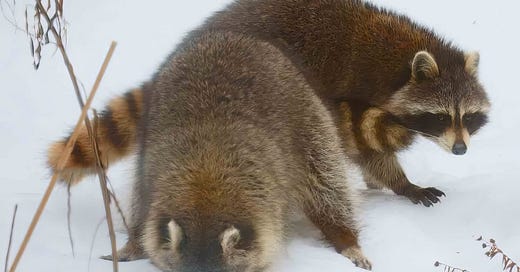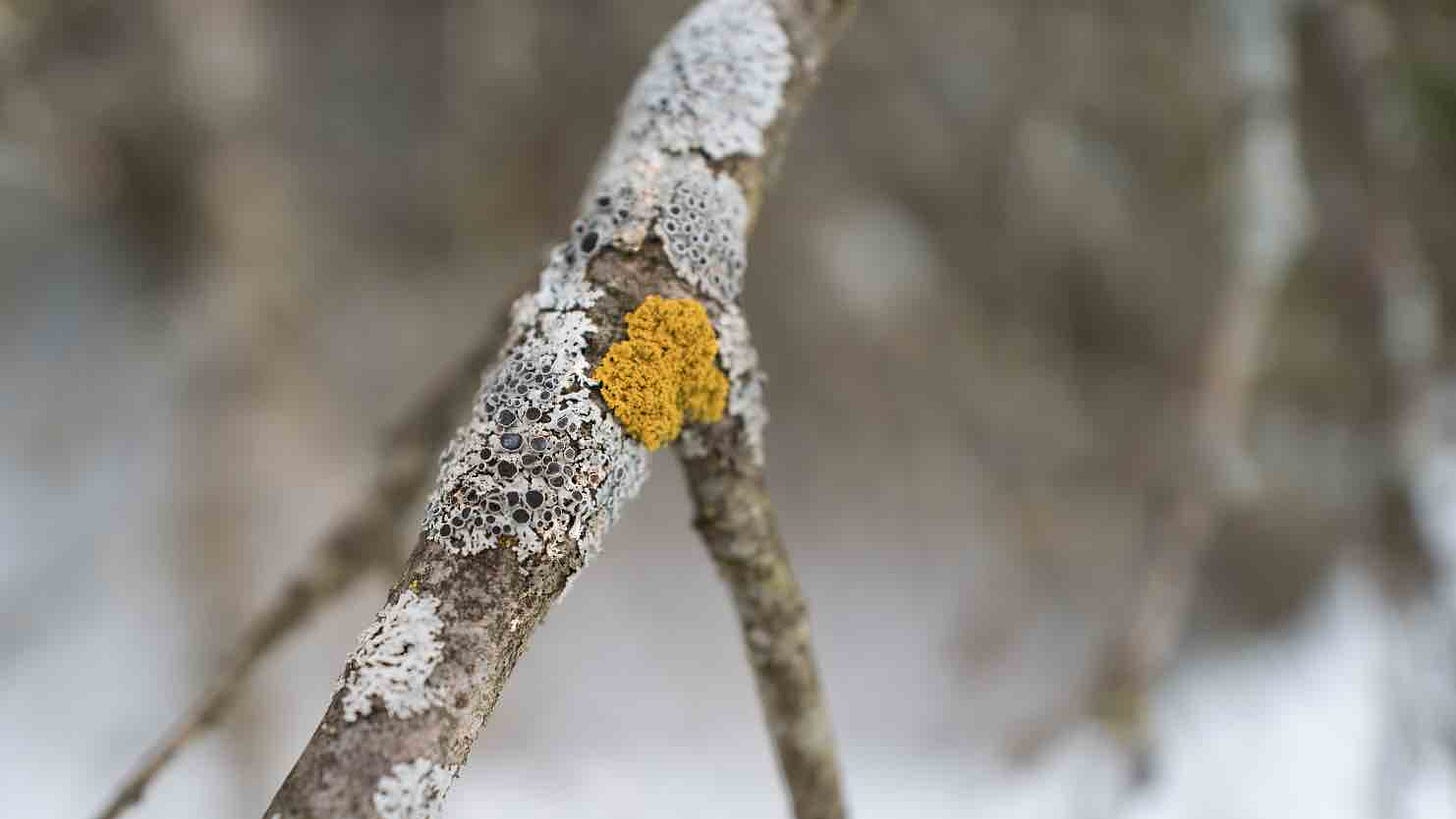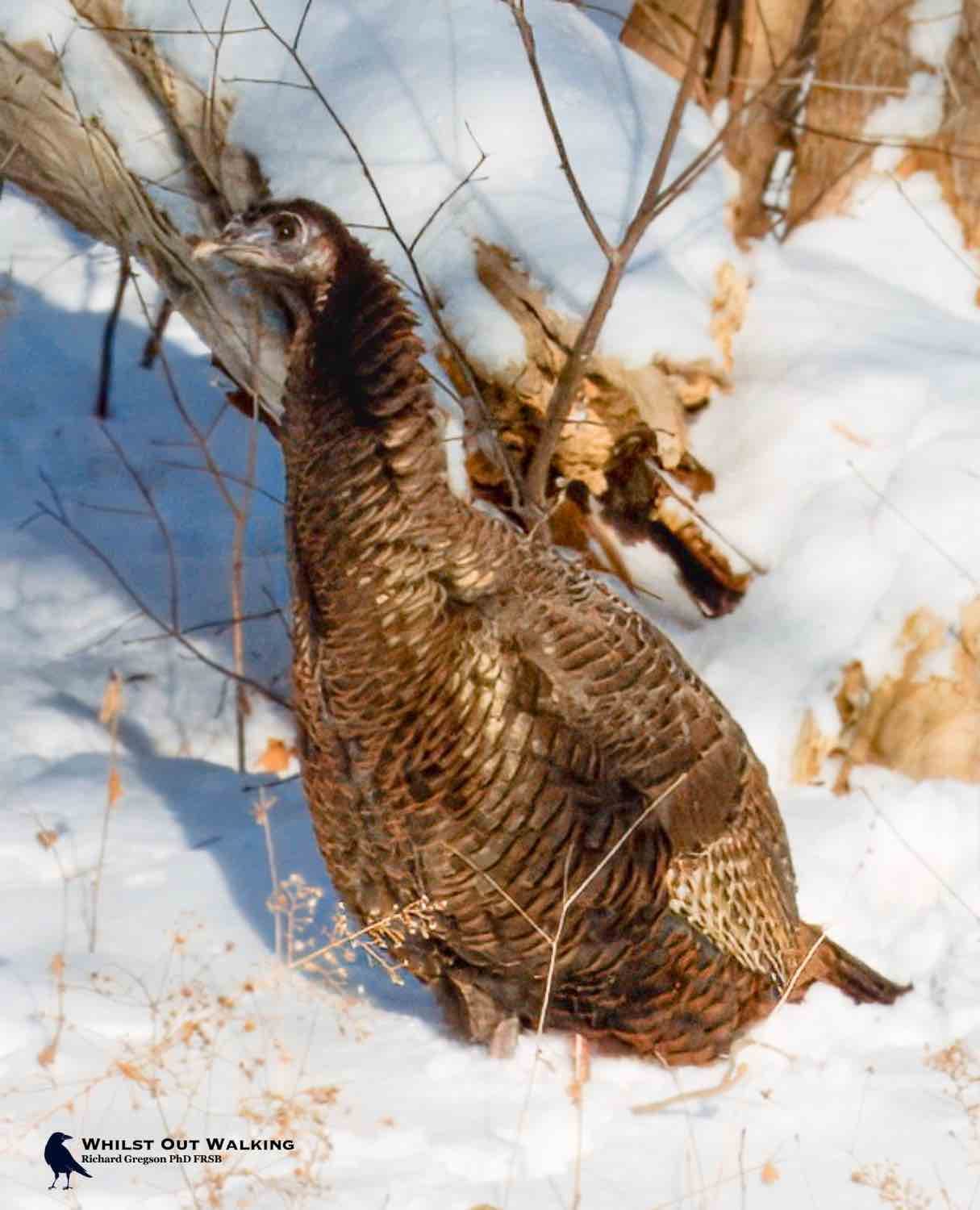“There was a young man of Quebec
Who was frozen in snow to his neck,
When asked, ‘Are you Friz?’
He replied, ‘Yes I is,
But we don’t call this cold in Quebec.’”—Attributed to Rudyard Kipling as “recalled” by Stephen Leacock (1937)
It’s the beginning of February and most people are sensibly hunkered down near a heat source, while outdoor exposure is often restricted to a dash to the car and from the car to a shop or workplace. The really adventurous will be out and about more because, or so they have been told, exercise is good — maybe they have dogs to follow with little plastic bags or there is business is attended to. But for all that, nature is not “noticed” for the most part. The assumption being that there is nothing to see, even if nature interests you in the first place. Well, it’s true that there’s barely anything green and certainly no flowers. On the other hand, there are some mammals still around, there are fabulous birding opportunities with northern species we only ever see in winter, and some gorgeous lichens on exposed tree branches.
It’s important to wrap up warmly — windchill around here can take temperatures below -20C - and to make sure that bird feeders are filled, because they at least bring wildlife to where you can watch from behind glass, in the warm. In the depths of winter, it is sometimes difficult to go outside to see what’s about. Much easier to fall back on hot chocolate. Nevertheless, it is important to get outside and do take kids with you, if you have any, regardless of the weather. Plenty of studies have shown that the benefits are enormous, mentally and physically, and there is much to see. Anyway, a winter hike can be as simple as roaming your backyard, which can be a fine adventure after fresh snowfall. Walking in the early evening is magical for all ages, especially on a clear night when the moon and stars are visible. Moon shadows are fascinating and children can hold a flashlight to search for tracks.
Hunt for tracks after a fresh snowfall to see who has visited during the night. Feed the birds and observe the activity. Put up a pole with seed and peanut feeders as well as a suet block, or you can make your own bird feeder by finding a pinecone, filling it with peanut butter and rolling it in bird seed. Once you begin feeding birds, you must continue through winter, as the birds will look for your feeder as a reliable source of food. Make sure you keep your feeder clean and free of wet seed.
Most people assume that the vast majority of birds have gone south by the time winter arrives, but this is not so. A surprising number of our birds, such as Woodpeckers, Crows, Chickadees, Cardinals, Goldfinches and others, are year round residents. At the same time, we can meet northern birds that think coming to Montreal in winter is like going to Florida would be for us. For example, many gardens will see Dark-eyed Juncos as regular visitors at this time of year, and then there might be Redpolls, Pine Siskins and Snow Buntings. During December, each year, and for the last century or so, birders all over North America go out and count birds as part of the Christmas Bird Count. You might be surprised to know that the Montreal count regularly turns up 70-80, sometimes more, different species of birds in the city in the depths of winter. It’s probably much the same wherever you live.
One of my favourite year round resident birds, and one that is easier to see in winter than summer, is the Carolina Wren. If you go south of the US border you will find these birds easily, they are common down there. But it was only as recently as some 15 years ago that, possibly aided by climate change, they gradually made their way northwards and a few arrived on the West Island and decided to stay. What’s more, they have been nesting here and raising young ever since, gradually increasing their numbers. The cold of winter isn’t their problem. They can generally cope with that, but they are ground feeders and when the ground is under a foot or two of snow and ice they have a bit of a problem finding a meal. Fortunately, they can make a decent living if there are regularly stocked feeders in gardens, and that seems to be what they have been doing. We have enjoyed a small but growing population along the southern shore of the West Island – they like it here. Truly, these are delightful immigrants, and we are so lucky to have them with us – cheery singers too, which makes locating them easier than peering onto every bush or sheltered corner. In the 2020/21 winter, we enjoyed a pair coming almost daily to our feeders throughout the winter, which then nested and raised young in early summer. Since then, they were nowhere to be seen or heard until they came back briefly to make sure the feeders were there in early fall and now we see the pair daily. Friends at the other end of town have them near their garden too, so do keep a look-out. You get an extra star for finding a Carolina Wren.
Some plants make small shows of their own in the winter. Look for the very distinctive seed pods of milkweed … the plant we are all encouraged to grow to support Monarch butterflies. There are a lot of them on the nearby Hydro servitude land in town and they can be found in small clumps along hedgerows and beside roads. Right now the pods are grey-brown and dried out, and they make quite an architectural feature standing tall above the snow. When they split open you can enjoy the fluffy fibres surrounding the seeds. These pods make a nice photographic subject.
You probably have to clear a path in the snow across your garden to the bird feeders? When you do so, look at the lower edges of the snow on either side for small holes. Even though the air temperature might be -20C or colder the temperatures underneath the snow in what is called the ‘subnivean layer’ are only a degree or two below freezing, and it is down there that a lot of small, furry creatures such as mice and voles wait for the return of spring while sheltered from the storms above. They create tunnels as they dig their way in search of something to eat, and every so often our paths will cross theirs.
And then the snows melt, the sun rises in the sky and once again it is spring and the cycle repeats.
What color is a Wild Turkey
This section is a repost of part of something I shared earlier in the week on my other, daily newsletter. It’s about Wild Turkeys, and I am certain that it will interest readers of this newsletter who don’t subscribe to the more photographically focussed daily one.
At a glance, a Wild Turkey usually looks black, but get the sunlight on their feathers at the right angle, and you see they are a beautiful bronze colour. Lovely birds and welcome in the neighbourhood. The typical base color of wild turkeys is a deep, reddish-brown. However, when hit by sunlight, these brown feathers take on a beautiful bronze-green iridescence that glimmers and shifts colors. It gives their plumage a multidimensional, prismatic effect. The feather shimmer and glow in the light is a function of the structure of the microscopic crystals on the feather’s surface.
(Quote): The wild turkey’s mix of brown, bronze, white, metallic and iridescent feathers serves a purpose. When a turkey is stationary, its patterned plumage blends into the surroundings of tree trunks, leaf litter and sun-dappled ground. When alert and moving, the shifting colors interrupt the turkey’s outline, making it harder for predators to detect. The contrasting light and dark bands help break up the bird’s shape. The bare head allows turkeys to lift just their neck to look around undetected. Form matches function with the wild turkey’s cryptic yet striking palette.
It really is the climate change …
https://www.theguardian.com/environment/2025/jan/30/birds-dying-pristine-amazon-climate-crisis-aoe
Exactly how the heat is causing bird numbers to decline is tricky to pinpoint, Wolfe says, but “these birds are intrinsically linked to small, small changes in temperature and precipitation”. One of the most immediate ways a heating planet hurts wildlife is by putting them out of step with their food sources: when fewer insects survive dry seasons, or leaves bloom and fruit ripens at different times, birds find themselves unable to forage and feed their young. Their nests begin to fail. Within a few generations, their numbers fall.
Plants and AI - Exercise Caution
https://tradescantia.uk/article/dont-ask-an-ai-for-plant-advice/
This fascinating article is about the dangers of resorting to AI for plant advice, but its conclusions are universally applicable.
Quote: Plant seller Horti recently added an AI “plant doctor” to their website. Unfortunately, if you keep track of news about AI, you’ll probably already know that it can be unreliable, unpredictable, and prone to dangerous flaws. Horti’s AI, “Groot”, is no different. In just a few hours of testing, Groot offered me unhelpful plant care suggestions, fabricated scientific sources, advised me to eat highly toxic plants, and accused a world-renowned gardener of murder.
“More Owls Than Your Could Shake a Stick At”
I posted, on my other Substack yesterday, this memory of a once in a lifetime event that happened to me twenty years ago … very much a Whilst Out Walking (= WOW) event to treasure.
England’s biggest bird sanctuary
Next time we are in England, or the time after, this will be worth a long detour to visit.
“This is going to be a reserve on a different scale from many of our other sites in England,” said Beccy Speight, the RSPB’s chief executive. “We are going to achieve an abundance of species and a size that will be unmatched for bird reserves elsewhere. It is going to demonstrate what is possible when it comes to rewilding and protecting birds.”
… home to birds that range from curlews to golden plovers and from merlins to ring ouzels. It is also one of the few places where hen harriers nest in England. Last year, hen harriers – one of Britain’s most persecuted raptors - produced eight chicks at Geltsdale. Other birds that proliferate at Geltsdale include short-eared owls, black grouse, lapwing, redshank and snipe, and it is hoped that the reserve will soon attract a host of new species, including golden eagles.











That experience seeing all of those Great Grey Owls must have been incredible. The seem so elusive. I have yet to see one and am hoping to see one for 2025.
My blue jay friends love peanuts in a shell. Sparrows shelled walnuts. Cardinals love sunflower and pumpkin seeds. The squirrels eat all of the above. I find there are no quarrels if there is sufficient food for all. This is what I try to do. Also feed Henry Newton the feline. Daily. There is such joy in doing so. Giving.